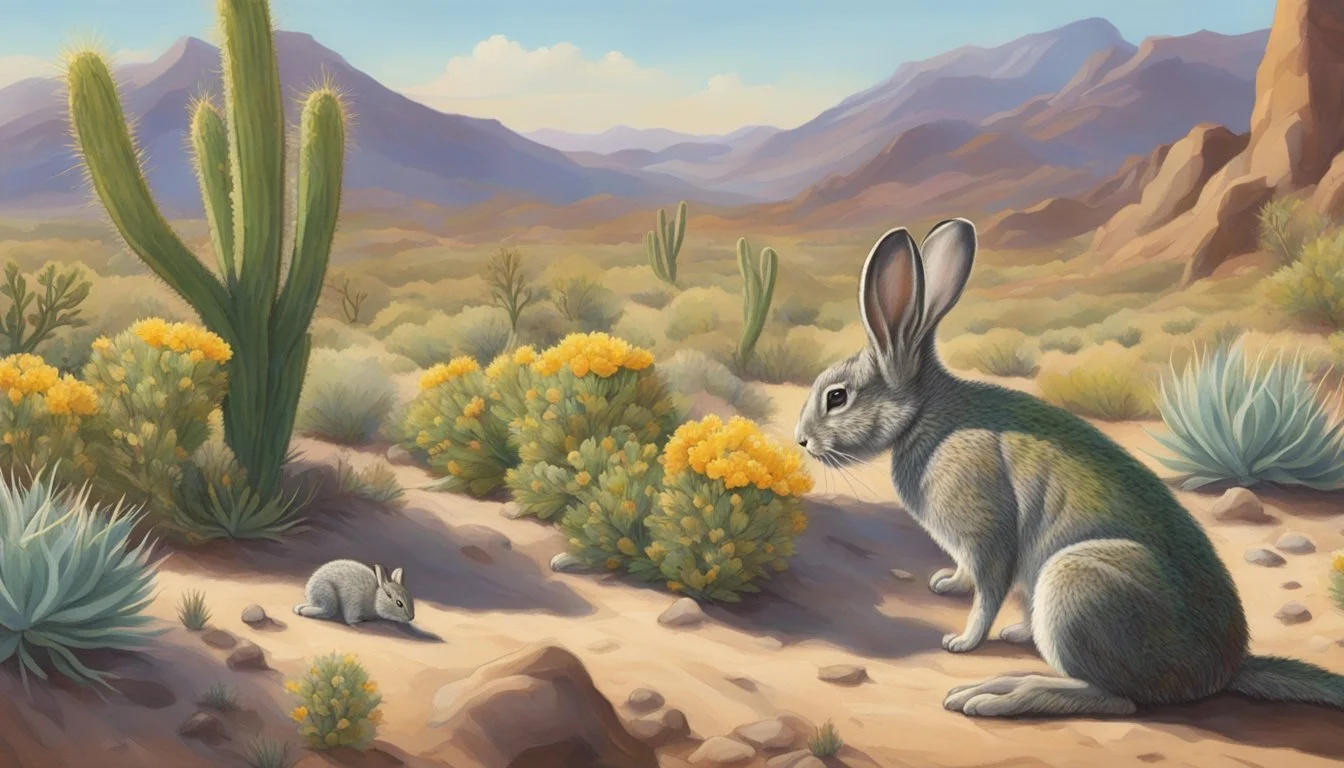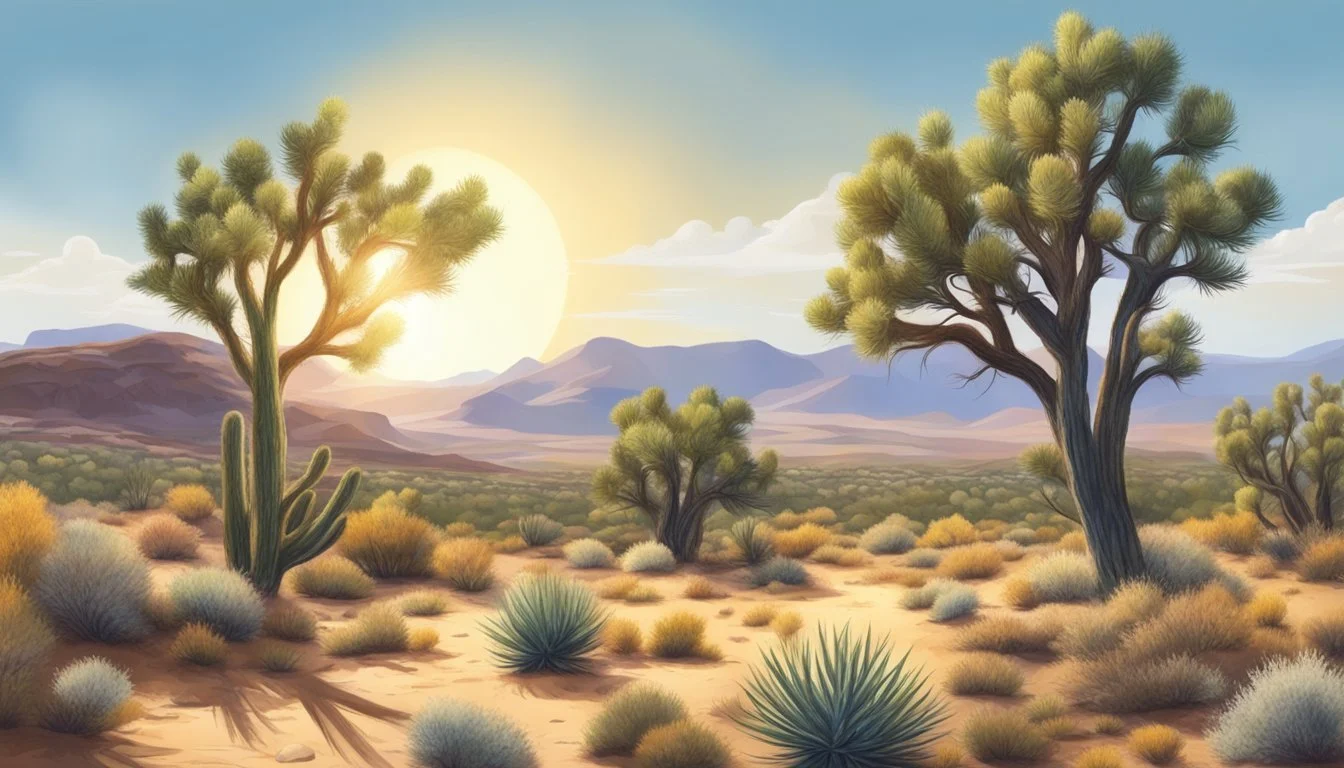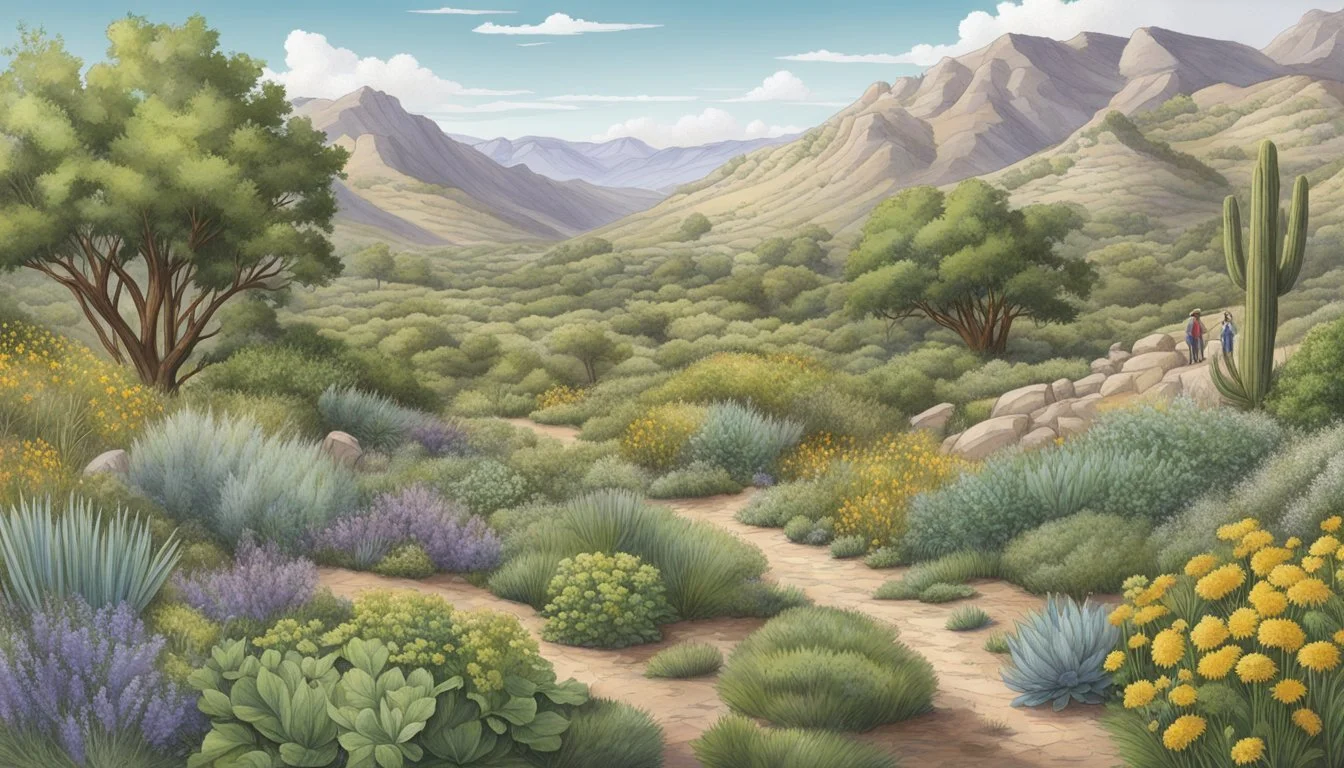Great Basin Native Edible Plants
Discovering Local Delicacies
Great Basin Native Edible Plants
The Great Basin's unique and diverse ecosystem harbors an impressive array of native edible plants, each adapted to thrive in this arid environment. Foraging for these plants not only offers a nutritious bounty but also provides a deep connection to the natural history of this remarkable region. From resilient desert marigolds to hearty pinyon pines, the flora of the Great Basin is a testament to nature's adaptability and abundance.
Ethnobotany reveals how indigenous peoples have long relied on these native plants for sustenance and traditional medicine. Berries such as raspberries, thimbleberries, and elderberries were integral to their diet, often used in dishes like pemmican. This historical synergy between people and plants showcases the sustainable practices that are still relevant today.
Foraging in the Great Basin allows modern enthusiasts to engage with this rich botanical heritage. By understanding and utilizing these native species, foragers can contribute to ecological preserving and appreciate the richness that this arid landscape has to offer.
Historical Context of Foraging in the Great Basin
Foraging has rich historical roots in the Great Basin, with Indigenous Peoples such as the Ute, Paiute, and Navajo making extensive use of native plants. The ethnobotanical knowledge of these communities highlights the importance of wild edibles in their diets and cultural practices.
Indigenous Peoples and Plant Usage
Indigenous Peoples in the Great Basin adapted to the region's arid conditions by developing a deep knowledge of native plants. The Ute, Paiute, and Navajo, among others, identified and utilized a variety of wild edibles.
Key plants include:
Pinyon pine nuts: A significant food source, harvested in late summer.
Bitterroot: Used for its starchy roots.
Sagebrush: Employed in both culinary and medicinal contexts.
These plants not only provided sustenance but also played roles in traditional medicine and cultural rituals.
Ethnobotanical Significance
The ethnobotany of the Great Basin reveals the sophisticated plant-based knowledge of its Indigenous inhabitants. Detailed ethnographic records showcase the methods used to harvest, prepare, and store these native edibles.
Plants such as desert marigolds served multiple purposes, from nutrition to dye-making. The pinyon pine stands out due to its economic and dietary value, often traded between tribes.
By understanding the intricate connections between these plants and the Indigenous cultures, modern foragers and conservationists can appreciate the long-standing relationship between people and the land in the Great Basin.
Ecology of the Great Basin
The Great Basin is characterized by its unique climate, diverse ecosystems, and varying altitudes. Its ecology includes arid deserts, mountainous regions, and specialized flora and fauna adapted to specific environmental conditions.
Desert Ecosystems
The Great Basin is primarily a cold desert, with low precipitation and high elevation. Sagebrush is a dominant plant species, forming the backbone of this arid ecosystem. Other notable flora include saltbush and greasewood, which are well-adapted to the saline soils.
The sparse vegetation supports a variety of fauna such as sage-grouse, pygmy rabbits, and various pollinators. Conservation efforts focus on maintaining the delicate balance required by these species to survive in such harsh conditions.
Mountainous Habitats
Mountain ranges dissect the Great Basin, creating diverse microhabitats. Pinyon-Juniper woodlands and coniferous forests dominate the mountainous regions. Elevation plays a crucial role in determining vegetation types, with higher altitudes supporting less common species like bristlecone pines.
This varied topography provides habitats for an array of wildlife, including migratory birds, mammals, and reptiles. The mountainous regions are vital for biodiversity and act as refugia for many species during climatic extremes.
Great Basin Climate and Soils
The climate of the Great Basin is characterized by hot summers and cold winters, with most precipitation falling as winter snow. This climate creates a significant challenge for the region’s flora and fauna, which have developed unique adaptations to survive.
Soils in the Great Basin are often arid and saline, influencing the types of vegetation that can thrive. Plants such as sagebrush have adapted to these conditions, with root systems that can access deep water reserves. Conservation strategies in the region focus on protecting these resilient species that maintain ecosystem stability.
Key Edible Plant Species
The Great Basin is home to a diverse array of native edible plants, each adapted to thrive in this unique environment. Key species include various trees, shrubs, wildflowers, and herbs, which are crucial both for their ecological roles and their value to human foragers.
Dominant Flora and Foliage
Species like Sagebrush (Artemisia tridentata) and Indian Ricegrass (Achnatherum hymenoides) dominate much of the landscape. Sagebrush, with its silvery leaves and distinctive scent, forms a crucial part of the Great Basin's ecosystem. It provides habitat for many animals and its leaves can be used as a spice in cooking.
Indian Ricegrass grows in sandy soils and is a significant food source historically for indigenous peoples. The grains can be ground into flour, offering a nutrient-rich addition to traditional diets. Another critical species is Pinyon Pine (Pinus monophylla), whose nuts are a calorically dense food high in protein and fats.
Wildflowers and Herbs
The vibrant Desert Marigold (Baileya multiradiata) adds splashes of color to the arid landscape. This wildflower, while not edible for humans, plays a key role in supporting pollinators. Serviceberry (Amelanchier alnifolia), on the other hand, produces edible fruit that can be eaten fresh or dried.
The Currant (Ribes spp.) is another valuable plant, offering berries that are rich in vitamins and antioxidants. These berries can be used in both sweet and savory dishes. Wild Mint (Mentha arvensis) is common near streams and moist areas, recognized for its aromatic qualities and use in teas and other culinary applications.
Trees and Shrubs
Juniper (Juniperus spp.) stands out with its evergreen foliage and distinctive berries, which can be used as a spice, particularly in meat dishes. The wood is also valued for its durability and aromatic properties. Serviceberry shrubs produce small, sweet fruits that can be harvested in late summer.
In addition, Currants are perennial shrubs that thrive in the Great Basin. Their tart berries are a traditional food source and can be used in jams, jellies, and baked goods. Pinyon Pines not only provide nuts but also contribute to the ecosystem by stabilizing soil and offering habitat for wildlife.
This diversity of plant life underscores the rich botanical tapestry of the Great Basin and its importance for both ecological sustainability and human sustenance.
Foraging Techniques and Traditions
In the Great Basin, foraging for native edible plants involves traditional knowledge and specific methods passed down through generations. Effective gathering techniques, an understanding of seasonal availability, and knowledge of culinary and medicinal applications are essential.
Gathering and Harvesting Methods
Foragers in the Great Basin use time-honored methods to collect wild edibles. Desert marigold flowers are gently picked to avoid damaging the plant. Pinyon pine nuts are harvested once the cones open naturally, ensuring high-quality seeds. Chokecherries and other berries are carefully detached to preserve the bush.
Traditional tools like digging sticks help in uprooting wild onions and yampah bulbs. Ethical foraging practices emphasize sustainability and respect for the ecosystem. Foragers often use woven baskets to carry their finds, which prevents crushing delicate items like fennel leaves and elderberries.
Seasonal Foraging
Seasonality plays a critical role in foraging. Spring and early summer are prime times for harvesting tender wild greens and flowers like desert marigolds. Autumn is ideal for collecting nuts and berries such as *pinyon pine nuts and elderberries.
Understanding the life cycles of plants ensures foragers gather items at peak freshness and nutritional value. Winter months are less abundant, but some plants, like certain root vegetables, can still be foraged. Seasonal knowledge enhances the efficiency and success of foraging trips.
Culinary and Medicinal Uses
Great Basin natives have integrated foraged plants into their culinary and medicinal practices. Thimbleberries and raspberries are often turned into jams, whereas chokecherries might be mashed into traditional pemmican, offering a mix of protein and tartness. Pinyon pine nuts are eaten raw or ground into meal.
Medicinally, foraged plants are used to brew teas or create salves. Yarrow leaves, for instance, are known for their wound-healing properties and are used in poultices. Sagebrush serves dual purposes, both as seasoning for meats and as an ingredient in medicinal teas that soothe digestive issues. These uses highlight the vital role of foraging in both nourishment and healing.
Plant Identification and Safety
Correctly identifying plants and understanding the risks of toxic species are crucial when foraging for edible wild plants in the Great Basin. Using field guides and learning key identification skills can help ensure safe and rewarding foraging experiences.
Proper Identification Techniques
Proper identification of wild plants begins with detailed observation of key features such as leaves, stems, and flowers. Field guides are invaluable for visual comparisons and detailed descriptions.
Leaves: Note the shape, size, arrangement on the stem, and the edges (margins), which may be smooth, serrated, or lobed. Accurate leaf identification is essential since it can easily distinguish between edible and non-edible species.
Stems: Observe the texture, color, and thickness. Some plants may have smooth, round stems, while others are ridged or hairy. The presence of spines can also indicate identity and edibility.
Flowers and Seeds: The color, shape, and arrangement of flowers are critical identifiers. Plants often have unique flower patterns that are reliable indicators of species. Seeds and fruits can also be distinctive.
Avoiding Toxic Plants
Recognizing and avoiding toxic plants is imperative for safe foraging. Many toxic plants mimic the appearance of edible ones, emphasizing the need for thorough identification. Common toxic plants in the Great Basin include certain species of hemlock and nightshade.
Field guides and local knowledge: Utilize comprehensive field guides and seek guidance from experienced foragers or local experts. They provide visual warnings and descriptions of toxic species.
Avoiding unknown plants: If a plant’s identification is uncertain, it is best to avoid consuming any part of it. Accurate knowledge and caution prevent potential poisoning.
Signs of toxicity: Be familiar with general toxic traits such as a bitter taste, milky sap, or a strong, unpleasant odor. These features often indicate the presence of harmful compounds.
By following these methods and precautions, foragers can enjoy the nutritional and culinary benefits of wild plants in the Great Basin safely.
Conservation and Eco-friendly Practices
Great Basin's unique ecosystem harbors a diverse array of native edible plants. To preserve this natural heritage, embracing sustainable foraging methods and considering the ecological, legal, and ethical impacts is crucial.
Sustainable Foraging
Sustainable foraging in the Great Basin involves minimal disruption to the environment. Foragers should avoid overharvesting to ensure plant regeneration. If a plant species appears scarce, it is wise to skip it to maintain its population.
Foragers should follow "leave no trace" principles. This includes sticking to existing trails and avoiding trampling vegetation. Gathering in small groups helps reduce the ecological footprint. Leaving some plants behind ensures wildlife also has access to natural food sources.
Impact on Local Ecology
Foraging can impact local ecosystems if not done responsibly. Overharvesting can deplete resources that native wildlife rely on, leading to imbalances. Collecting plants only from areas where they are abundant ensures minimal negative impact.
Removing invasive species while foraging can benefit the ecosystem. Always differentiate between native and invasive plants. Proper identification is critical to avoid damaging indigenous flora.
Legal and Ethical Considerations
Knowledge of local regulations is essential. Many areas in the Great Basin have legal protections for certain plants. Gathering information from local authorities and adhering to guidelines helps prevent illegal foraging.
Respecting private property and obtaining necessary permits where required ensures ethical foraging practices. Ethical considerations also include understanding the cultural significance of certain plants to indigenous communities and harvesting respectfully.
Proper education on ethical foraging practices can contribute to the conservation of Great Basin's natural heritage and diverse landscapes. This includes sharing knowledge through workshops and community programs to promote conservation efforts.
Cultural Insights and Continuity
The Great Basin region is rich in cultural diversity and historical significance, reflected in both its indigenous culinary traditions and modern foraging practices. These traditions not only highlight the cultural insights of Native American communities but also demonstrate the adaptive nature of these practices in contemporary settings.
Native American Traditions
Indigenous peoples of the Great Basin have a deep-rooted connection with native edible plants. Tribes like the Shoshone and Paiute traditionally relied on plants like pinyon nuts, camas bulbs, and various berries for sustenance. These plants were not merely food sources; they played pivotal roles in rituals and social gatherings.
Knowledge of foraging and preparing these plants was passed down through generations. The use of these plants was often accompanied by ceremonies that underscored their importance. For example, the pinyon nut harvest was a communal event involving entire families, reinforcing social bonds and cultural identity. Various traditional methods of preparation, such as roasting or grinding, reveal the intricate culinary traditions preserved by these communities.
Modern Foraging and Culture
In contemporary times, foraging for wild edibles in the Great Basin has seen a resurgence. Modern foragers are increasingly appreciative of the benefits of native plants, both for their nutritional value and their role in supporting biodiversity. This practice is often seen as a way to reconnect with nature and traditional ways of living.
Cultural enthusiasts and culinary experts alike explore these native plants, incorporating them into modern diets in creative ways. Workshops and community events are often held to teach sustainable foraging practices and traditional cooking methods, ensuring that this valuable knowledge is shared with new generations. Thus, the legacy of Great Basin's native edible plants continues to thrive, bridging historical practices with contemporary culture.
Additional Resources
For those interested in exploring the native edible plants of the Great Basin, there are several valuable resources available. These include comprehensive field guides and educational workshops that equip foragers with knowledge and skills.
Foraging Field Guides
Field guides are essential tools for anyone looking to forage safely and sustainably. These guides often contain detailed descriptions, photographs, and information on the habitat and seasonality of various plants. Popular guides for the region include "Tasting the Wild: Exploring Native Edible Plants in Nevada" and others specific to the Great Basin. They provide insights into identifying plants such as desert marigolds and pinyon pines, which thrive in the arid landscape. Field guides are particularly useful for distinguishing between edible and inedible species, ensuring a safe foraging experience.
Educational Workshops and Events
Educational workshops and events provide hands-on learning opportunities for foragers of all levels. These sessions often include guided foraging trips, plant identification lessons, and preparation techniques. Organizations like GRuB's Wild Food and Medicine program offer community classes and teacher trainings that emphasize safe and sustainable harvesting practices. Workshops may cover a variety of topics, from the nutritional benefits of native plants to methods for incorporating them into meals. Attending these events can significantly enhance one's ability to forage responsibly and enjoy the bounties of the Great Basin's native flora.






